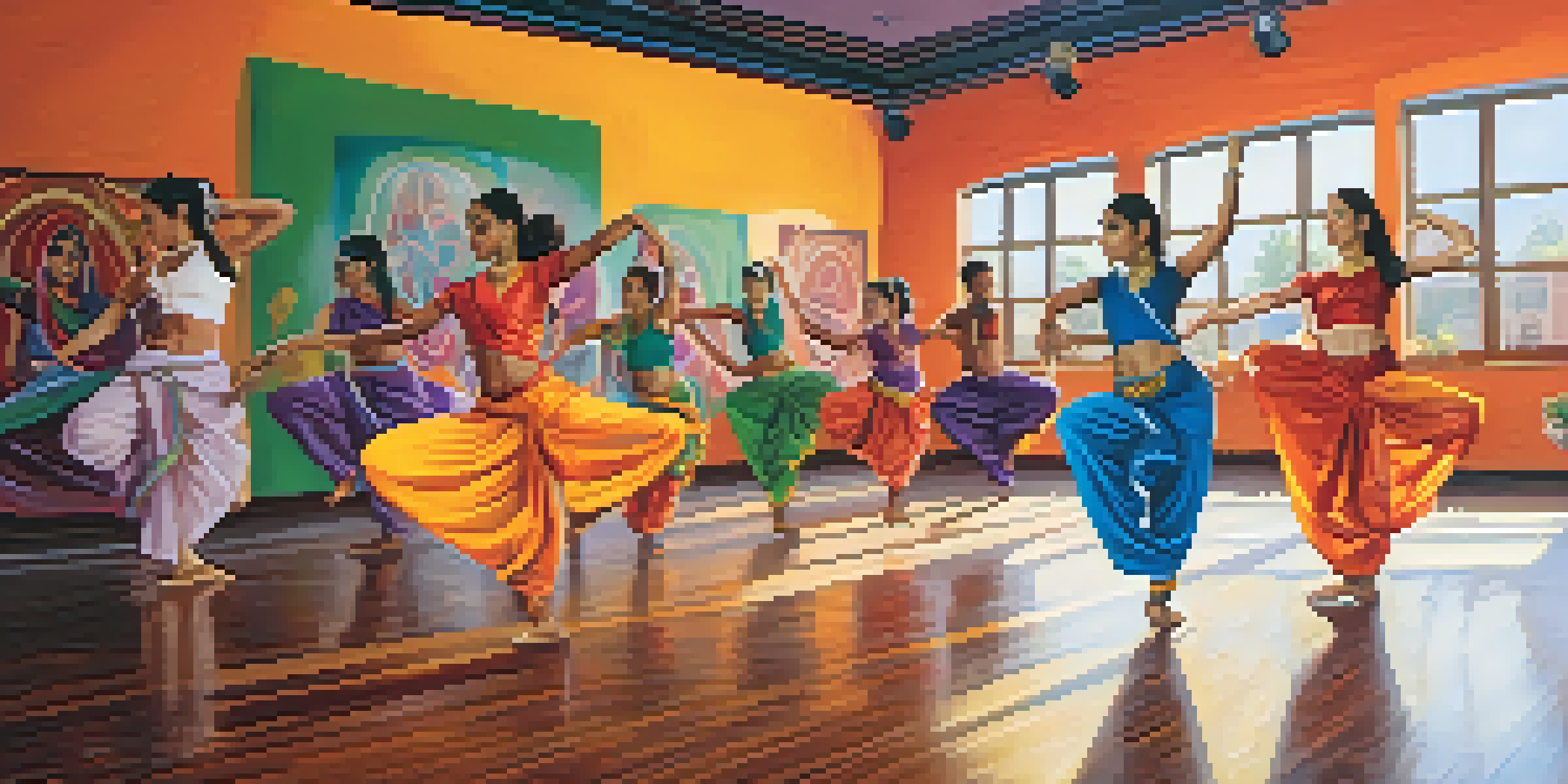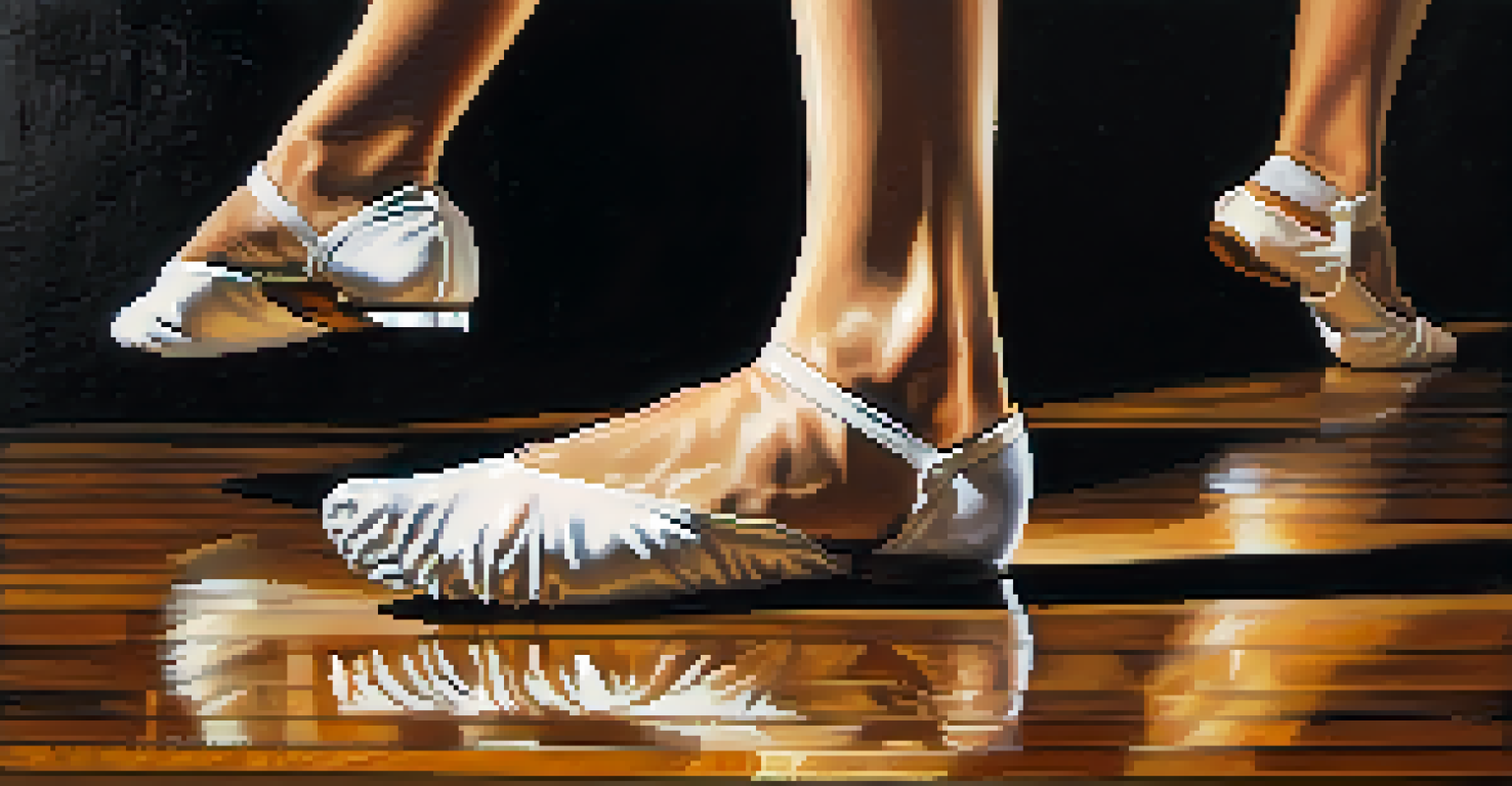The Line Between Cultural Exchange and Appropriation in Dance

Understanding Cultural Exchange in Dance Forms
Cultural exchange in dance refers to the sharing and blending of different dance styles, often leading to innovation and creativity. It occurs when dancers incorporate techniques, movements, or rhythms from diverse cultures, fostering a rich tapestry of artistic expression. For example, the fusion of hip-hop and traditional Indian dance has birthed compelling performances that celebrate both heritages.
Dancing is like dreaming with your feet.
This exchange can enhance appreciation and understanding of different cultures, allowing dancers to learn from one another. It creates a space where artists can experiment and collaborate, resulting in performances that resonate with wider audiences. When executed respectfully, cultural exchange can lead to meaningful connections and a celebration of diversity.
However, it’s crucial to approach cultural exchange with sensitivity. Dancers must be aware of the origins of the movements they incorporate and the context behind them. Ignoring this can lead to misunderstandings and dilute the significance of the original dance form.
Defining Cultural Appropriation in Dance
Cultural appropriation occurs when elements of one culture are taken and used by another, often without permission or understanding. In dance, this can manifest when artists adopt movements or styles from marginalized cultures, stripping them of their original meaning. This practice can be particularly problematic when it involves commodification, where cultural elements are used for profit rather than respect.

For instance, a dance company might perform a traditional dance from a culture without any acknowledgment of its significance, reducing it to mere entertainment. This not only disrespects the culture but also perpetuates stereotypes and reinforces power imbalances. The dancers and choreographers may not realize the impact of their actions, which highlights the importance of education in these discussions.
Cultural Exchange Enhances Dance
Sharing and blending diverse dance styles fosters innovation and promotes appreciation of different cultures.
Cultural appropriation can lead to backlash and hurt feelings, particularly among those whose cultures are being appropriated. Understanding the difference between appropriation and appreciation is vital to fostering a respectful and inclusive dance environment.
The Role of History in Dance Practices
Dance is deeply rooted in history, often reflecting the narratives and struggles of specific communities. Understanding the historical context of a dance form is essential when considering its use in contemporary performances. For example, African American dance styles often tell stories of resilience and cultural identity, and using these movements without acknowledgment can be seen as disrespectful.
The dance is a poem of which each movement is a word.
Moreover, the evolution of dance is influenced by historical events, migrations, and exchanges between cultures. Recognizing how these factors shape dance forms can help dancers appreciate the layers of meaning behind their movements. It’s like peeling an onion; the deeper you go, the more you uncover about the cultural significance.
By respecting the history of a dance form, artists can engage in meaningful dialogue that honors the original creators. This approach not only enriches their performances but also fosters a deeper connection with their audiences.
The Importance of Consent and Collaboration
Consent is a cornerstone of respectful cultural exchange in dance. Engaging with a culture means seeking permission and collaborating with its representatives to ensure authentic representation. For instance, if a dance company wishes to incorporate traditional Maori moves, consulting with Maori dancers and elders fosters a respectful relationship and enhances the performance’s authenticity.
Collaboration can lead to a fusion of styles that honors both cultures, creating a dynamic and enriching experience for both the dancers and the audience. This practice not only validates the original culture but also promotes cross-cultural understanding. It’s like cooking a meal together; each person brings their unique ingredients, resulting in a delicious dish that celebrates both flavors.
Consent is Key in Cultural Practices
Engaging with cultural elements requires permission and collaboration to ensure authentic representation and respect.
By prioritizing consent and collaboration, dancers can navigate the fine line between exchange and appropriation. This approach cultivates a climate of respect and appreciation, which is essential for fostering positive relationships between cultures.
The Influence of Social Media on Dance Culture
Social media has transformed the landscape of dance, allowing artists to share and learn from each other across the globe. Platforms like TikTok and Instagram have popularized dance challenges that often borrow from various cultural styles. While this can lead to greater exposure and appreciation, it also raises concerns about cultural appropriation when movements are used without proper context.
For example, a viral dance trend might incorporate elements from a traditional cultural dance, but if the origin is not acknowledged, it can lead to an erasure of that culture’s significance. This phenomenon highlights the need for dancers to be mindful of the content they share and the narratives they promote. It’s crucial to remember that behind each dance move lies a story worth telling.
Social media can be a powerful tool for education, offering a platform for discussions about cultural sensitivity. By engaging in these conversations, dancers can learn to navigate the complexities of cultural exchange and appropriation with care and respect.
Navigating the Fine Line: Best Practices for Dancers
Dancers can adopt several best practices to navigate the line between cultural exchange and appropriation. First and foremost, education is key; understanding the origins and meanings of the movements they wish to incorporate can significantly impact their approach. Engaging with cultural representatives and participating in workshops can provide valuable insights into the dance forms they want to explore.
Additionally, being open to feedback is essential. Dancers should be willing to listen to critiques from members of the cultures they are engaging with, allowing for growth and understanding. It’s similar to learning a new language; the more you practice and listen, the more fluent you become in the culture’s nuances.
Education Prevents Cultural Appropriation
Understanding the origins and meanings of dance movements is crucial to navigate the fine line between appreciation and appropriation.
Finally, honoring and acknowledging the original creators is vital. Whenever possible, dancers should credit the culture and its contributions in their performances, creating a dialogue that respects and celebrates diversity. This practice not only enriches their art but also fosters a sense of community between cultures.
The Future of Dance: Embracing Diversity Respectfully
The future of dance lies in embracing diversity while respecting cultural boundaries. As the world becomes more interconnected, the potential for rich cultural exchanges continues to grow. Dancers have the opportunity to create innovative work that reflects a myriad of influences, but this must be done with care and consideration.
By fostering an environment that prioritizes education, collaboration, and consent, the dance community can cultivate respect for all cultures. This approach encourages a celebration of differences, leading to performances that resonate deeply with audiences around the world. It’s like a vibrant mosaic; each piece is unique, yet together they create a stunning picture.

Ultimately, the dialogue around cultural exchange and appropriation in dance is ongoing. Dancers and choreographers must continuously reflect on their practices, ensuring they contribute positively to the rich tapestry of dance while honoring its origins. Through this commitment, the future of dance can be bright, inclusive, and respectful.